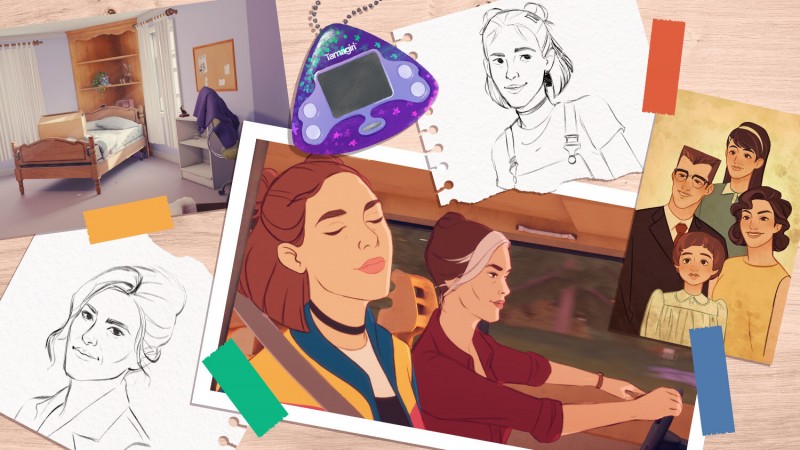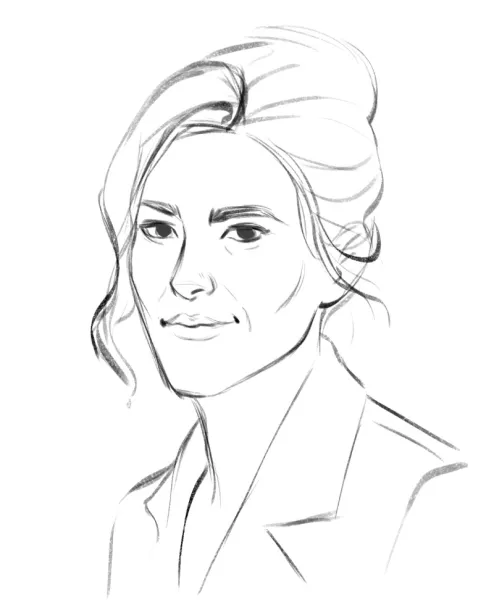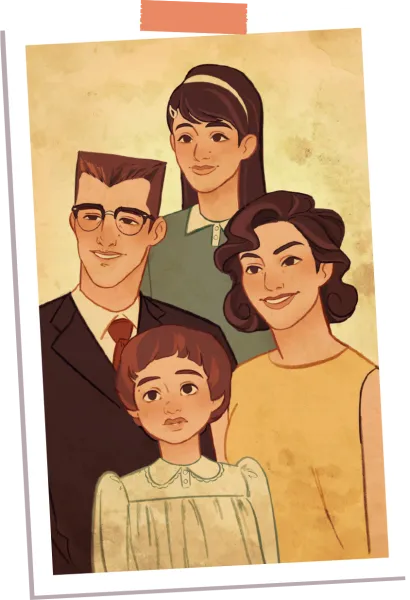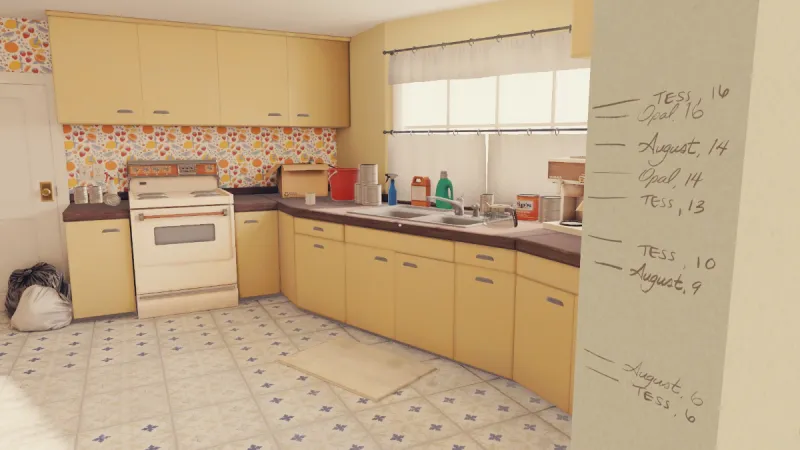
Every road trip has bumps along the way - unexpected potholes, constant traffic, and extra pit stops. There are stretches of nothingness, and your numb mind tries to pass the time until you reach the destination. Sometimes the open road instills a sense of freedom; other times, you feel trapped. However, the memories that help us power through the tedium often stick – singing along to a classic, having a heart-to-heart conversation, or observing a surprising sight.
In creating a game about a road trip, you could say Gone Home developer Fullbright experienced these highs and lows at every turn. Two years ago, the debut trailer for its third game, Open Roads, was met with excitement. And rightfully so, as it centered on a mother and daughter’s journey to discover more behind their family history – a different set of protagonists than we usually see in our video game adventures. The hand-drawn art style popped, but it also turned heads for the top-tier talent cast in the two leading roles: Keri Russell (The Americans, Star Wars: Episode IX - The Rise of Skywalker) and Kaitlyn Dever (Booksmart, Dopesick).

The reveal got people talking, and a year later, people were talking again – but for more complicated and alarming reasons. Multiple allegations of employee mistreatment surfaced against Fulbright co-founder and Open Roads creative director Steve Gaynor, causing him to step down from the project. Outside of the concern for a healthy working atmosphere and the employees that suffered, many questioned if Open Roads would survive the turmoil and not get lost in the wreckage of Gaynor’s negative actions.
A small team wanted to ensure it didn’t, staying on and finishing the game. However, they knew some big changes needed to be made on the game and how the studio collaborated on projects. They needed to put the studio’s previous, damaging leadership style in the rearview mirror.
This is how they got back on the road and found a new route to their destination.
Changing the Plan
Open Roads could not continue development as it was. The studio’s bureaucratic structure was hurting everyone involved, and the best option was to remove Gaynor altogether. That wasn’t the simplest decision as he owns Fullbright. When news of Gaynor’s harmful management hit, the Open Roads team posted a statement on Twitter. It stated Gaynor would step down as creative director and transition to a writer on the project. However, that’s no longer the case.

“When that last information came out, we were still kind of figuring out what role Steve [Gaynor] was going to play in Open Roads as he still is the company’s owner, so it’s kind of an unusual situation,” says art director Noël Clark. “But as of June of 2021, he hasn’t really had any involvement in Open Roads. We’ve taken it and made it our own.”
The next step was deciding which team members wanted to stay at Fullbright. Fifteen employees had already left the project since development started in 2019. So many people came in and out that the developer questioned if there could be a unified vision. The remaining employees started simple, asking who wanted to keep making Open Roads. Then the team had to decide if finishing the game was feasible. Six members thought so. “It felt like there was still something about the game that we found very compelling,” says engineering lead Aaron Freedman.
A Star-Studded Duo: Tess and Opal's Relationship

Actresses Keri Russell and Kaitlyn Dever have helped bring the characters of Opal and Tess to life, recording at times together and apart. This mother/daughter relationship is the most important aspect of Open Roads, and it’s something about which Fullbright thought carefully.
“There aren’t as many mother/daughter stories out as there are father/daughter and father/son stories,” says executive producer Amy Fincher. “A pitfall we see sometimes is because there are so few mother/daughter stories, they kind of end up being the same story [with] the same conflicts and the same personality types.”
At the start of the game, Opal and Tess are in a good place. There’s a child and parent dynamic, but they’ve built a good relationship. “One thing that we talked a lot about in the beginning is with a lot of mother/daughter relationship stories that we see, like Lady Bird, for example, the plot is about that first step towards friends,” explains graphic artist Harrison Gerard. “[Lady Bird’s] ending is like, ‘Okay, they’re on their way.’ And I think Open Roads is really interesting because they’ve kind of already had that happen. They don’t start as enemies.”
A lot of the journey centers on Tess seeing her mom as a person outside of that caretaker role. On the other side, Opal is noticing things about Tess that remind her of herself. “Tess is into movies and has a lot of personal interests that she pursues independently without anybody driving her to do that,” Fincher says. “And Opal is kind of the same way. But she has a different perspective on those things because she’s trying to do some creative things in her life, and not all of it worked out the way she wanted it to.”
Executive producer Amy Fincher was the only one who wasn’t with the team before Gaynor left. In fact, she accepted the job as the information was coming to light. “It was Noël [Clark] and another person on the team that came to me and were like, ‘Hey, full transparency, here’s what’s going on: All these changes are happening, and we still want you on the team but now that it’s a little different than what we had talked about before, do you still want to do it?’” Fincher recalls.
She had never worked with a team in flux like this but felt she had something to offer. “I felt like there were things I could do to help this team to restructure and figure out a plan to finish this game with a very different team composition,” she says. “Also, just helping out a team that had been through a lot and had a lot of unique needs. It’s very challenging for us, but as a producer, it’s the kind of thing that I really like to do – try to make a difference in how a team operates day to day.”
Taking Action
It’s one thing to say you’re making changes; it’s another to make them. Fincher says her first big task was listening to everybody about what happened and how they wanted things to go in the future. More collaboration and creative freedom were high on the list, but another was full transparency.
“Everybody knows everything,” Fincher says. “Everybody participates in all major decisions, and the budget is somewhere where anybody can look at it at any time, which was a big change in a lot of ways. It was a relief for me because in the past, as a producer, I’m kind of encouraged to really focus on giving the right information at the right time. And now it’s more like, if I know something, everybody knows it. It’s an easier way to work in many ways, and I enjoy it.”

The shift in atmosphere helped form a new path for Open Roads. “The really impactful thing that I immediately noticed was the kind of the discussions that we were having,” Freedman says. “They were very open. We were very willing to share ideas with each other about the game and what we thought we would like to change. It was very refreshing – that first moment of, like, ‘Oh, we’re going to really just look at this game and decide how we want to move forward.”
Graphic artist Harrison Gerard agrees. Previously, he had to send suggestions up and down the ranks for approval. But in this new phase of development, he noticed a considerable shift in his responsibilities. “It kind of switched overnight into me and Noël [Clark] being like, ‘Oh, it would be cool if we had a phone memo sheet or a Playboy magazine or something like that.’ And then we’d just make it and put it in the game. It’s a lot more responsibility, but it was also super creatively freeing to go from having just a laundry list of things that someone else thought should be in the game to stuff that you were creating out of whole cloth.”
